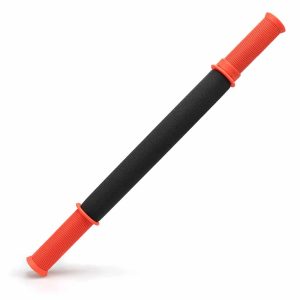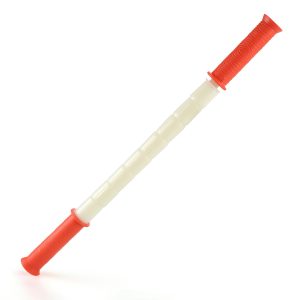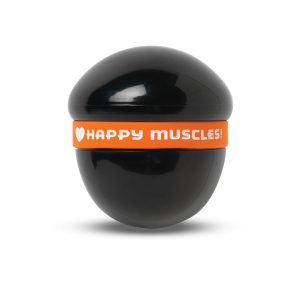Knee Pain

Causes
Over doing any activity including running, skiing, incline walking, weight training: Engaging in excessive amounts of physical activity can lead to overuse injuries, as the body’s tissues are subjected to repetitive stress without adequate time for recovery. This can manifest as microtears, inflammation, or fatigue fractures in muscles, tendons, or bones.
Knee joint or muscle immobilization: Prolonged periods of inactivity or the use of immobilizing devices like casts or braces can lead to significant muscle atrophy and joint stiffness. This lack of movement reduces blood flow and nutrient delivery, weakening the surrounding structures and making them more susceptible to injury upon resuming activity.
Tripping or falling: Unexpected loss of balance resulting in a trip or fall can cause acute injuries due to sudden impact or unnatural twisting motions. This often leads to sprains, strains, fractures, or dislocations as the body attempts to absorb the impact or correct its position.
Sudden overload in the muscles: Applying a force or resistance to a muscle that is significantly greater than its current capacity can result in an immediate injury. This sudden overload often causes muscle strains or tears as the muscle fibers are unable to withstand the excessive tension.
Going up or down steps: The repetitive movements of going up and down steps can place considerable stress on the knee joint and surrounding muscles. Improper mechanics or weakened musculature can lead to pain, inflammation, or aggravation of pre-existing conditions in this area.
Back of Knee Pain
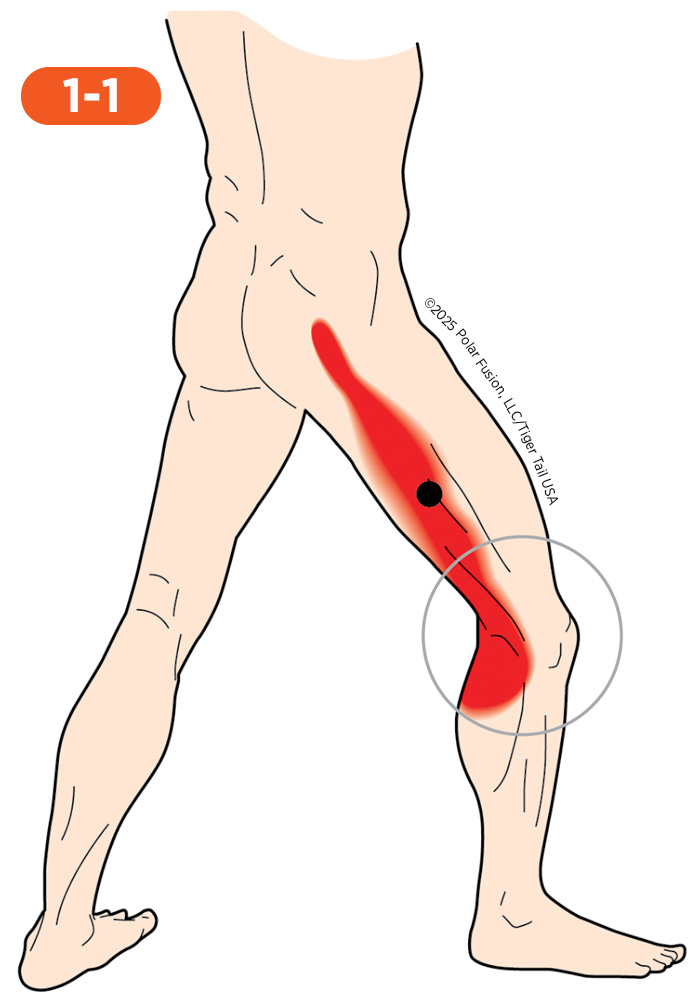
I Feel
Side of Knee Pain
When the outer part of your thigh muscle, the vastus lateralis, is the source of discomfort, the pain is located on the side of the knee. You’ll feel a deep, aching pressure where the thigh meets the knee, often running along the outside of the leg. You’ll notice the pain gets worse during activities like going up and down stairs, sitting for long periods, or even just walking downhill. It can be extremely sensitive to pressure along the outer thigh, and issues here can sometimes mimic deeper knee problems like IT band syndrome or a meniscal tear, leaving the joint feeling tight and restricted, especially when trying to fully bend or straighten the knee after rest.
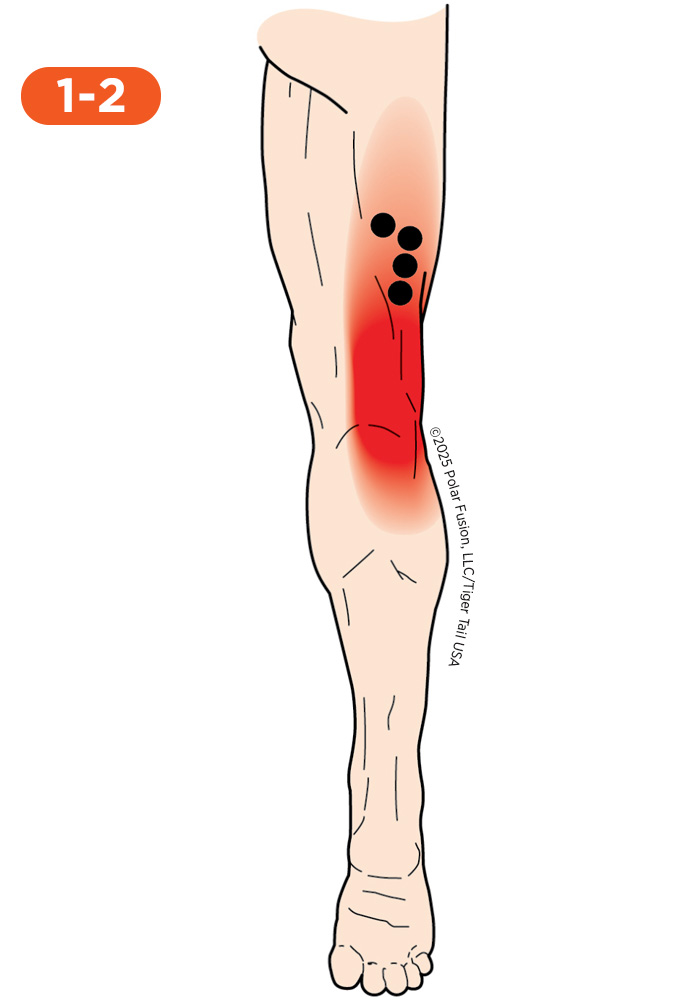
I Feel
Going Up and Down Steps
When muscle knots develop in the outer hamstring muscle, the biceps femoris, the pain is pin point at the back of the knee. You’ll feel a deep, dull ache near the outside of the lower knee joint often radiating slightly up the back and outside of the thigh. The pain may become worse during activities that involve bending and straightening of the knee, such as climbing stairs, speed walking, or pedaling a bicycle. These issues can sometimes mimic deeper knee or nerve problems, like popliteal tendinitis or sciatic nerve irritation, leaving the hamstring feeling tight and restricted, particularly when attempting to touch your toes or straighten your leg.
Knee Won't Straighten
If your knee won’t straighten due to muscle knots in the the outer part of your hamstring, the biceps femoris, the pain typically stays in the back of your knee. You’ll feel a deep, aching tightness at the attachment point behind the knee’s outer side and may radiate up the back and outer thigh. Pain intensifies during movements that stretch the hamstring, such as fully straightening your leg, bending to touch your toes, or sitting with your leg extended straight (like on an ottoman). The affected muscles are quite sensitive to pressure along the lower, outer hamstring muscle. Such problems may sometimes mimic deeper knee or tendon injuries, like a hamstring tear or popliteal tendinitis, leaving your knee stiff and restricted and making full extension or ‘locking out’ the joint difficult.
Behind The Knee Pain When Running
Let’s talk about muscle knots in your outer hamstring, the biceps femoris, the pain doesn’t just stay in your thigh; it focuses right behind your knee while you run. You’ll likely feel a deep, cramping ache that runs along the tendon and gets significantly worse when you push off to accelerate or sprint. You’ll feel pain behind the knee when running, which can feel like a nagging ache or tightness, almost like a pull or cramp. It sometimes comes as a sharper twinge, making you want to stop and stretch, and can leave your knee feeling a bit wobbly. This constant tightness can sometimes mimic other problems like inflammation behind the knee or even a Baker’s Cyst, making the issue feel worse than just a knot.
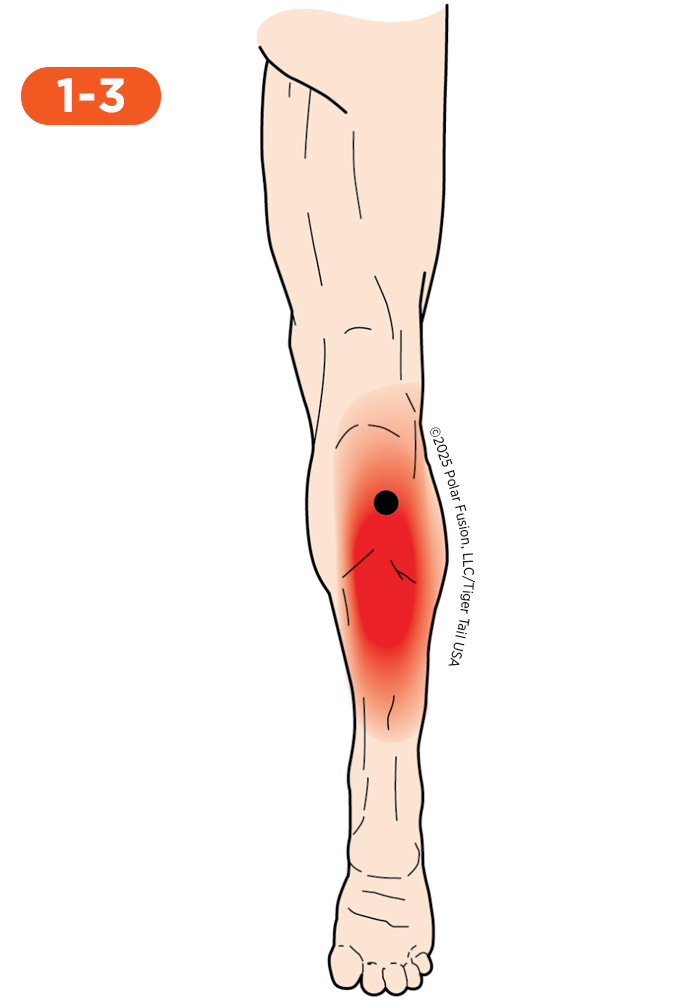
I Feel
Heel Pain
You may not realize it, but muscle knots deep in your calf muscle, the soleus, can cause real heel pain. You’ll feel a dull ache that’s constantly there, or it might be a sharp, stabbing pain, especially with your first steps in the morning or after resting. Sometimes it feels like a bruise right on the bottom of your heel, making it tender to the touch or when you put weight on it. You’ll find the pain gets worse when you’re doing activities like walking barefoot, standing for a long time, or running uphill. Because the muscle is so tight, it leaves the calf feeling incredibly restricted, which can make your ankle feel locked up. This nagging ache can sometimes mimic deeper problems like plantar fasciitis or Achilles tendinopathy.
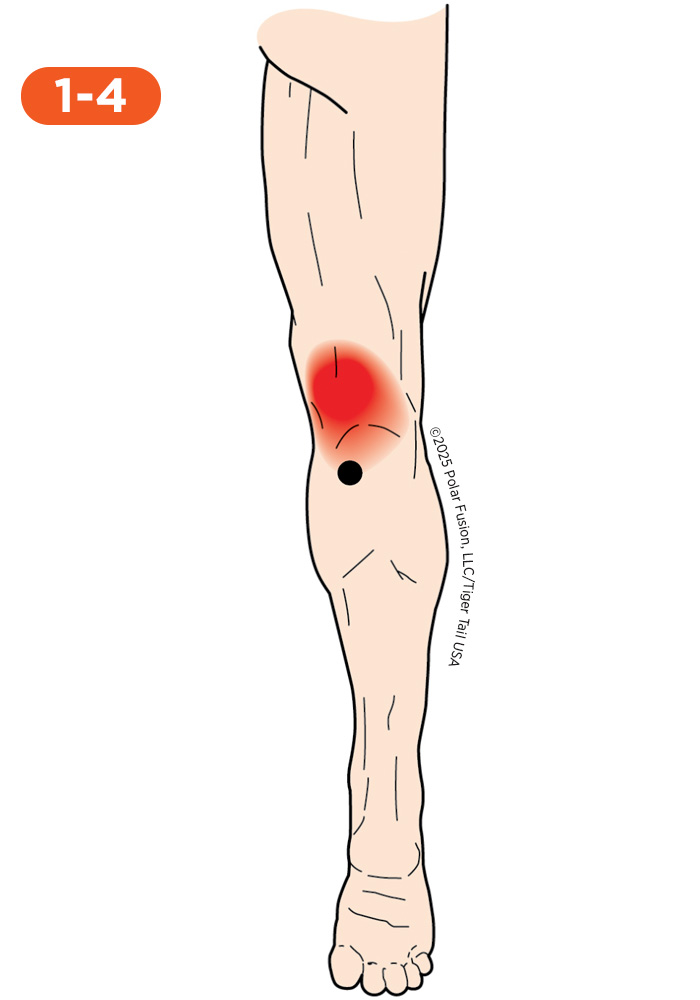
I Feel
Crouching Pain
The pain you feel from crouching could be coming from muscle knots in the muscle right behind the knee joint, the popliteus muscle. You may feel a deep ache or a sharp poke behind your knee or notice grinding or stiffness as you bend. All of these can limit your movement. You’ll notice the pain gets significantly worse when you’re doing activities that involve deep flexion, like crouching down, squatting, or sitting with your knees tucked for a long time. This deep pain can sometimes mimic deeper problems, like a torn meniscus or a ligament strain, because it makes the knee feel so tight and restricted when you try to bend or pivot. .
Locking Knee
That tiny muscle deep behind your knee, the popliteus, is often the hidden culprit when your knee feels like it’s locking up. It’s like your knee joint suddenly catches or gets stuck in a particular position, and you might not be able to straighten it out all the way. When muscle knots form, the discomfort focuses deep inside the back of your knee, presenting as a sharp, intense pinch that feels like it’s stopping your joint from moving. You’ll find the locking sensation and pain get significantly worse when you’re doing activities that involve pivoting, like quickly turning on your leg, stepping downstairs sideways, or just rotating your foot while standing. It’s often susceptible to pressure right in that small space behind the joint line, making it feel guarded and unstable.
Behind the Knee Pain When Running
The sharp pain you feel behind your knee when running might be caused by those stubborn muscle knots in a muscle behind the knee called the popliteus muscle. The discomfort usually focuses deep inside the back of your knee, presenting as a sharp, intense pinch that feels like a persistent strain. You’ll find the pain gets significantly worse when you’re doing dynamic activities like sprinting downhill, quickly stopping during a run, or even just pushing off forcefully when changing direction. Because the popliteus is key to knee stability, muscle knots in this area can mimic deeper problems like a meniscus tear or popliteal tendinitis, which is super frustrating. This issue often leaves the knee feeling tight and unstable right in the center back, and the spot is susceptible to pressure if you poke around deep behind the joint line.
Side of Knee Pain

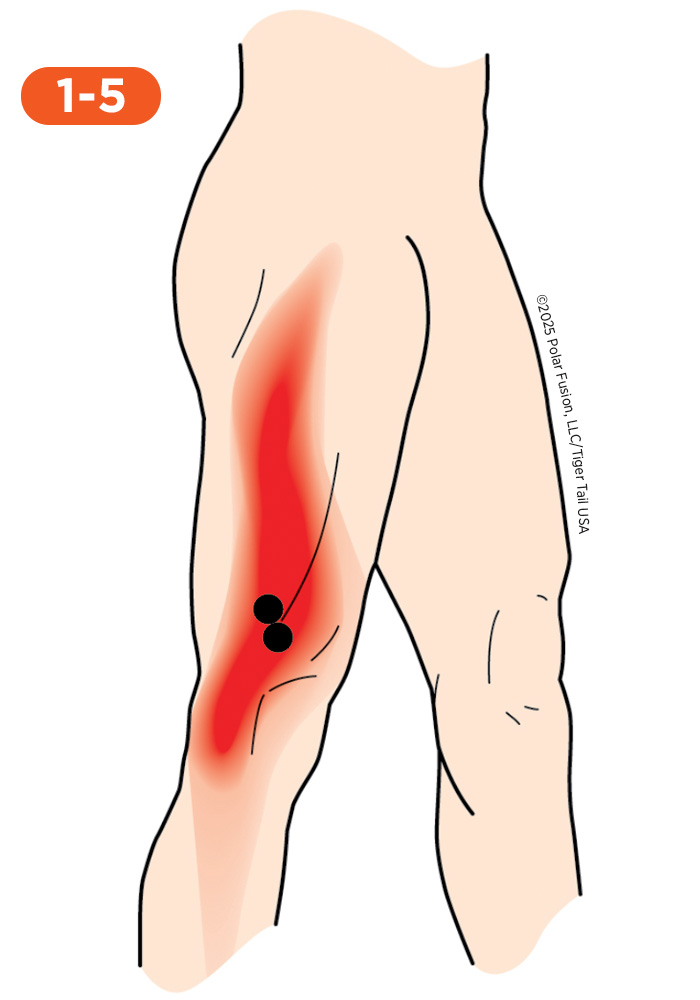
I Feel
Side of Knee Pain
That nagging ache you feel on the side of your knee is often caused by tight muscle knots in your outer thigh muscle, the vastus lateralis. The pain usually focuses right over the bony part of your outer knee, presenting as a deep, dull ache that sometimes runs all the way up the side of your thigh. You’ll find the pain gets significantly worse when you’re doing things like climbing stairs, sitting for long periods, or doing deep squatting movements. Because the muscle is so tight, this pain can easily mimic deeper problems, such as IT band syndrome or a meniscus tear, which is a common misdiagnosis.

I Feel
Side of Knee Pain
That nagging ache you feel on the side of your knee that seems to wrap right around the joint is often caused by tight muscle knots in your outer thigh muscle, the vastus lateralis. The pain usually focuses right over the bony part of your outer knee, presenting as a deep, dull ache that sometimes runs all the way up the side of your thigh. You’ll find the pain gets worse when you’re doing things like climbing stairs, sitting for long periods, or doing deep squatting exercises. This pain can easily mimic deeper problems like IT band syndrome or even a meniscus tear, which is a common misdiagnosis.
Front of Knee Pain

I Feel
Front of Knee Pain When Running
You might not expect it, but those tight muscle knots in your outer thigh muscle, the vastus lateralis, can be the cause of that annoying front of knee pain when you run. You may feel discomfort that usually focuses right around the kneecap, presenting as a deep, dull ache that feels like a constant squeeze, sometimes running along the side of your thigh. You’ll find the pain gets significantly worse when you’re doing high-impact activities like running on hills, deep lunges, or even just walking downstairs. Because this muscle helps control the kneecap, those knots can easily mimic deeper problems like patellofemoral pain syndrome or what we know as “runner’s knee”.
Stuck Knee Cap
The feeling of a stuck kneecap is often caused by those tight muscle knots pulling everything off-center in your outer thigh muscle, the vastus lateralis. That little vone in the front of your knee, the patella, isn’t gliding smoothly like it should. This discomfort usually focuses right along the side of the kneecap, presenting as a deep, nagging ache that sometimes runs down to the side of the knee joint. You might feel a binding sensation and pain get significantly worse when you’re doing activities that require knee bending, like squatting down, climbing stairs, or even just sitting with your knee bent for too long. Because this muscle is supposed to glide the kneecap smoothly, knots can mimic deeper problems, such as patellofemoral tracking issues or cartilage damage. The outer thigh tissue itself is susceptible to pressure, and the muscle leaves the kneecap feeling tight and restricted, as if it can’t quite move in its groove.

I Feel
Front of Knee Pain When Running
That stubborn knee pain you feel while running is often caused by those tight muscle knots right in the middle of your thigh, the rectus femoris. The discomfort usually focuses directly under the kneecap, presenting as a deep, nagging ache that sometimes runs up the front of your thigh. You’ll find the pain gets significantly worse when you’re doing explosive activities like sprinting, kicking a ball, or even just climbing stairs after a workout. Because this muscle attaches directly to the kneecap, those knots can easily mimic deeper problems, such as tendinitis or patellofemoral pain syndrome.
Deep Knee Pain
That nagging deep knee pain you feel while running often comes straight from those muscle knots right in the middle thigh muscle, the rectus femoris. You may be surprised to see that the muscle knot is located at the top of the thigh. The pain usually focuses deep inside the front of your knee, presenting as a deep, pulsing ache that sometimes runs up the entire front of your thigh. You’ll find the pain gets significantly worse when you’re doing activities like sprinting, running up steep hills, or even just kicking your leg forward forcefully. Because this muscle is so central to straightening the knee, those knots can easily mimic deeper problems like patellofemoral pain or meniscus tears.
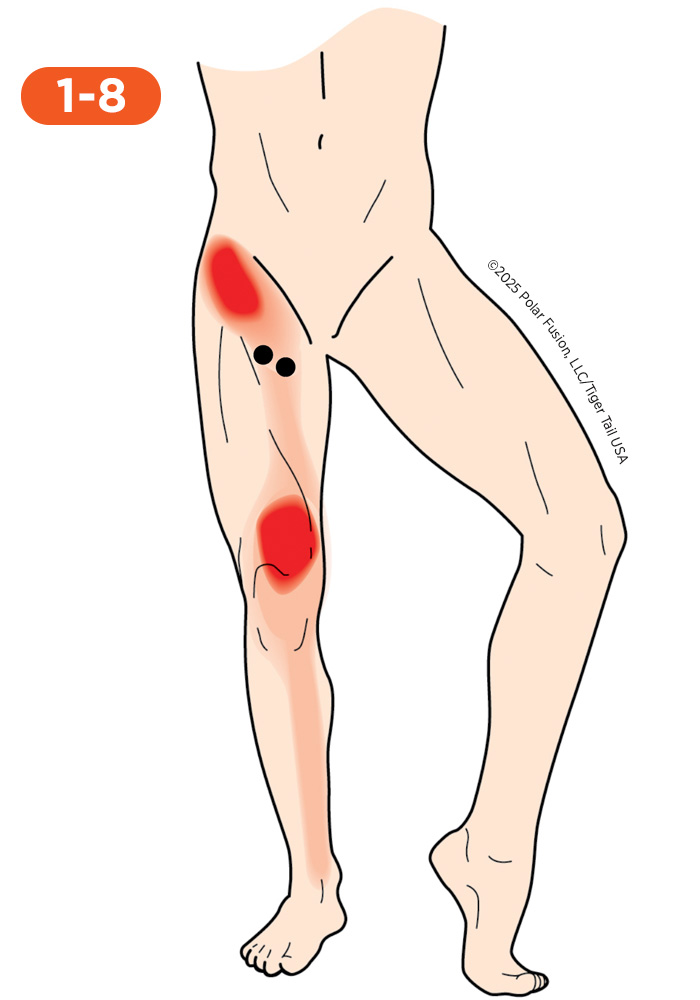
I Feel
Pain Above the Knee Cap
That stubborn pain you feel right above the kneecap can be traced back to those muscle knots in your inner thigh—specifically the adductor brevis and longus. The discomfort usually focuses right at the top of the thigh bone, presenting as a deep, nagging ache that sometimes runs a bit down the inner quad muscle. You’ll find the pain gets significantly worse when you’re doing activities that use the groin forcefully, like changing direction quickly during a run, straddling something wide, or even just getting out of a low car. Because these muscles anchor high up, their tightness can mimic deeper problems, such as hip flexor strain or even the early stages of arthritis. This tightness is extremely sensitive to pressure if you press into the upper inner thigh, and it leaves the hip and knee feeling tight and restricted, especially when you try to move your leg outward.

I Feel
Front of Knee Pain When Running
That persistent front of knee pain you get while running is often rooted in those nagging muscle knots right above and inside your knee cap, the inside quad muscle, the vastus medialis oblique (VMO). The discomfort usually focuses right under the kneecap, presenting as a deep, dull ache that feels like a persistent grind or tightness. You’ll find the pain gets significantly worse when you’re doing activities like running up hills, doing lunges, or even just walking downstairs. Because the VMO is essential for keeping the kneecap tracking correctly, those knots can easily mimic deeper problems, such as cartilage irritation or patellofemoral pain syndrome. The inner thigh tissue right near the kneecap is often susceptible to pressure, and the muscle leaves the knee feeling tight and restricted, especially when you try to fully straighten it during your stride.
Buckling
When your knee feels like it’s buckling or giving out, the culprit is often the tightness and weakness caused by muscle knots in your inner quad, the vastus medialis oblique (VMO). The instability usually focuses right on the kneecap, presenting as a sharp, intense pinch that feels like the joint is shifting. You’ll notice the pain and buckling get significantly worse when you’re doing activities like going downstairs, stepping off a curb, or pivoting quickly. Because the VMO is the primary muscle that prevents the kneecap from shifting sideways, its knotting can easily mimic deeper joint instability or ligament issues.
Runner's Knee
When you get that pain at the front of your knee while running—what many people call “runner’s knee”—the true source of that discomfort is often muscle knots in your inside quad muscle, the vastus medialis oblique (VMO). The pain usually focuses right under the kneecap, presenting as a deep, burning ache that gets worse the longer you run and can run along the inner edge of the joint. You’ll find the pain gets significantly worse when you’re doing impact activities like running downhill, kneeling, or sitting with your knees bent for extended periods. Because the VMO function is critical for proper kneecap motion, these knots directly cause or contribute to the diagnosis of patellofemoral pain syndrome. The VMO area is often susceptible to pressure, and it leaves the knee feeling tight and restricted, causing that grinding sensation when you bend it.
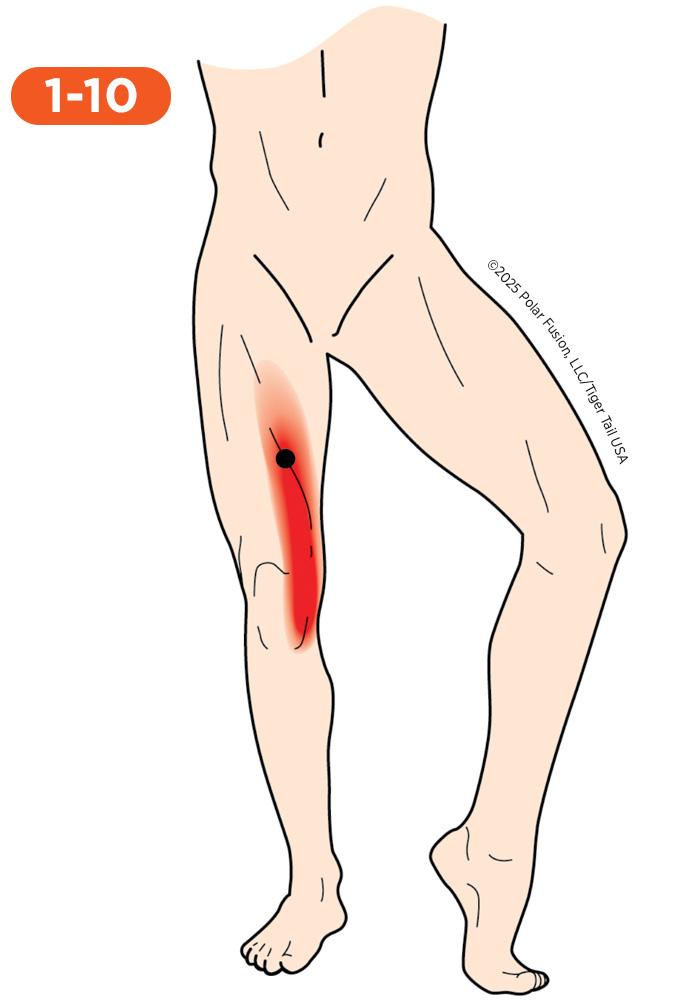
I Feel
Front of Knee Pain When Running
If you’re feeling pain on the front of your knee while running—what many people call “runner’s knee”—the likely source of that discomfort is often muscle knots in your inner quad muscle, the vastus medialis oblique (VMO). The pain usually focuses directly on the inside edge of the kneecap, presenting as a deep, burning ache that gets worse the longer you run and can radiate along the inner side of the knee joint. You’ll find the pain gets worse when you’re doing impact activities like running downhill, kneeling, or sitting with your knees bent for extended periods. Because the VMO function is critical for proper kneecap motion, these knots directly cause or contribute to the diagnosis of patellofemoral pain syndrome.

I Feel
Front of Knee Pain When Running
That annoying front of knee pain that seems to pull diagonally is often traced back to muscle knots in the long, strap-like muscle on your inner thigh, the sartorius. The pain can mimic runner’s knee and usually focuses on the inside and front of the knee, presenting as a sharp, tugging pain that can run down the inner shin. You’ll find the discomfort gets worse when you’re doing activities that require hip and knee coordination, such as bringing your knee up and across your body, running with a wide stride, or kicking your leg out while walking. Because the Sartorius crosses both the hip and the knee, its muscle knots can easily mimic deeper problems, such as pes anserine tendinitis or a hip flexor strain.

